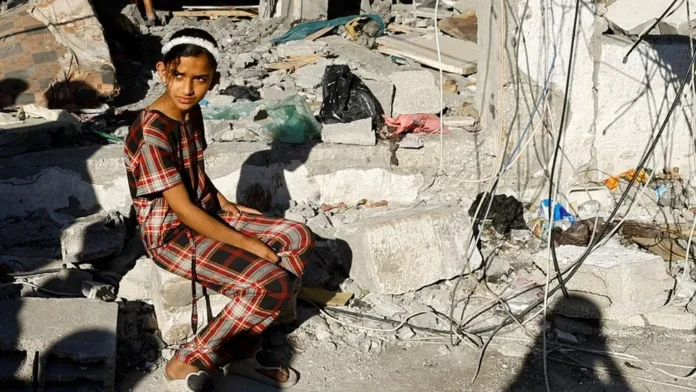Introduction:
In a world where the drums of war often drown out the whispers of peace, recent developments in the Middle East between Israel and Iran, alongside the ongoing conflict in Gaza, underscore the urgent need for a renewed focus on peacebuilding. This feature explores the multifaceted dimensions of the conflict, the international response, and the essential, though often elusive, pursuit of lasting peace.
The Precipice of War:
The recent exchange of hostilities began with a significant escalation following Israel’s assassination of a senior Iranian general. This act triggered a series of retaliatory measures, culminating in Iran’s unprecedented missile and drone strike on Israeli territory—the first of its kind since the Islamic Republic’s establishment. The conflict’s ripple effects are palpable, extending to the Gaza Strip and the Lebanon-Israel border, hinting at the potential for a broader regional conflict.
Global and Regional Responses:
In the face of these escalations, global leaders, notably US President Joe Biden, have urged restraint. The administration has voiced concerns over broad military operations, particularly in Gaza’s densely populated areas like Rafah, emphasizing the need to minimize civilian casualties and pursue a targeted military strategy. Despite a veto from the US on a UN resolution granting Palestine full member status, international voices continue to advocate for a balanced approach, recognizing the complex dynamics at play.
The Human Cost:
Amidst the strategic and diplomatic maneuvers, the human toll continues to mount. In Gaza alone, tens of thousands have been reported killed, with the majority being women and children. This stark reality brings the discourse back to the imperative of peace—a principle that transcends political and territorial disputes.
Pathways to Peace:
History teaches us that peace is not merely the absence of war but a deliberate and sustained effort to build understanding, address grievances, and foster cooperation. Initiatives could include:
Strengthening Diplomatic Channels: Encouraging dialogue between all parties, mediated by international actors who can navigate the complex political landscape.
Humanitarian Efforts: Ensuring continuous and unhindered aid to affected civilians, coupled with initiatives to rebuild war-torn regions.
Conflict Resolution Programs: Implementing educational and community-based programs that promote mutual understanding and reconciliation.
Conclusion:
As the Middle East stands on the brink of an all-out war, the call for peace has never been more critical. It is a call that demands courage, compromise, and above all, a steadfast commitment from all stakeholders. The road to peace is fraught with challenges, but it is the only path that can lead to a sustainable future for the region and its people.
This feature aims to shed light on the complexities of achieving peace in times of conflict and the role of the international community in facilitating these processes. It serves as a reminder that every effort made towards peace, no matter how small, is a step towards a better world.




